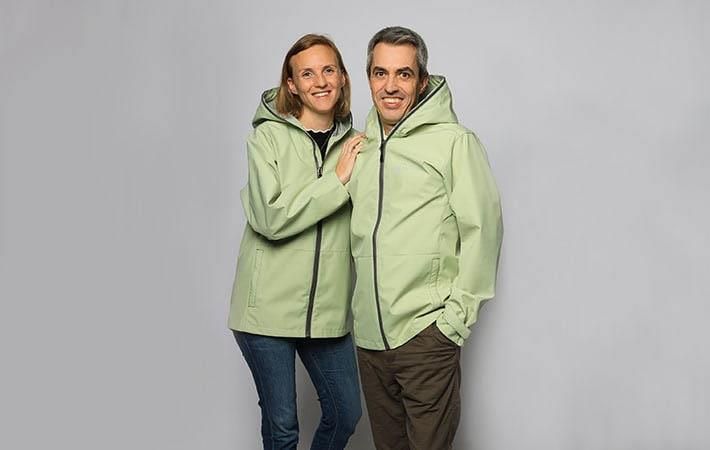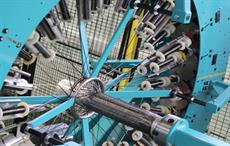Sympatex and Schoeller are set to display the rEvolution Hybrid jacket, the world’s first upcycled functional jacket, at ISPO Munich 2020, in hall 1, booth 300 / hall A1, booth 218 respectively. Schoeller develops functional fabrics and textile technologies. Sympatex develops, produces, and distributes membranes, laminates, and functional textiles.
The functional jacket is made from 30 per cent recycled used textiles and 70 per cent recycled PET bottles is the latest development from wear2wear. The three-layer, high-performance jacket was developed and produced in collaboration with the European industry partnership, which meanwhile has grown to nine core members and three technology partners with the aim of rapidly closing the textile loop. The outdoor jacket offers not only maximum wearing comfort, but also EN 343-certified rain protection. Inspection of the sustainable and skin-friendly rEvolution Hybrid jacket is carried out by Oeko-Tex und bluesign in line with the stringent Standard 110, according to Sympatex.Sympatex and Schoeller are set to display the rEvolution Hybrid jacket, the world's first upcycled functional jacket, at ISPO Munich 2020, in hall 1, booth 300 / hall A1, booth 218 respectively. Schoeller develops functional fabrics and textile technologies. Sympatex develops, produces, and distributes membranes, laminates, and functional textiles.#
The manufacturing process for the rEvolution Hybrid jacket begins by mechanically reducing used, 100 percent polyester (PES) textiles into fibres and converting them into granulate using an additional polymer melting process. The granulate is subsequently melted again and spun into new PES filament yarn. The yarns are then processed into textile polyester fabrics by Schoeller and laminated together with the 100 per cent recyclable polyetherester-based Sympatex membrane to create an unmixed, highly-functional and 100 percent waterproof functional textile that can be recycled again. The rEvolution Hybrid manufacturing process currently relies on 30 percent recycled used textiles. The remaining 70 per cent is derived from PES yarns produced from recycled PET bottles. By using chemical upcycling processes, other substances such as PU adhesives can also be dissolved into a spinnable concentration so that they gradually vanish from the recycled textiles. The goal is to increase the percentage of recycled used textiles to 100 per cent within the coming months.
The Design2Recycle concept that was developed for the rEvolution Hybrid is based on a selection of low-seam cuts of materials that are as pure-grade as possible, in combination with unmixed ingredients and environmentally-compatible equipment and dyes that do not affect the recycling process.
Using an integrated RFID chip, all wear2wear products, including the rEvolution Hybrid, are traceable and transparent for the consumer and the process partner. TEXAID, the new wear2wear partner, can determine if a clothing article belongs to the concept by reading the RFID chip. And partners such as CWS ensure the collection of used clothing from the rental business and the protective work clothing segment. Once the clothing has been collected, sorted and separated, it then finds its way to wear2wear partner Carl Weiske, which re-initiates the upcycling process through a special combination of mechanical and chemical methods. Using a water-soluble PVA (polyvinyl alcohol) yarn in the Design2Recycle process, non-recyclable residues can be cost-effectively removed without impacting the material. The yarn, which withstands the daily wear and wash cycle typical for outdoor and protective work clothing, first begins to dissolve at 100°C. After the raw materials are reprocessed, new PES filament yarn is created, which is then processed into new upcycled polyester fabrics. The wear2wear loop is closed and a new high-quality, sustainable functional textile can be created.
Fibre2Fashion News Desk (GK)


